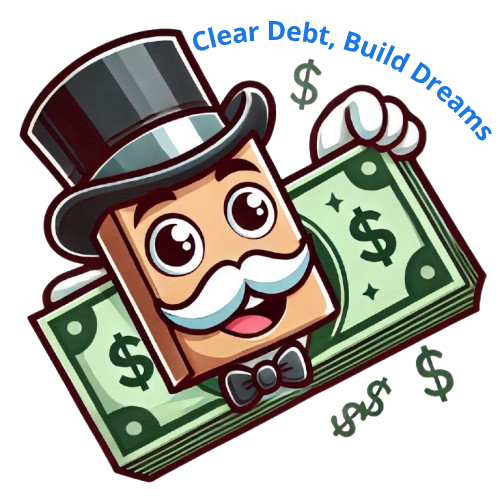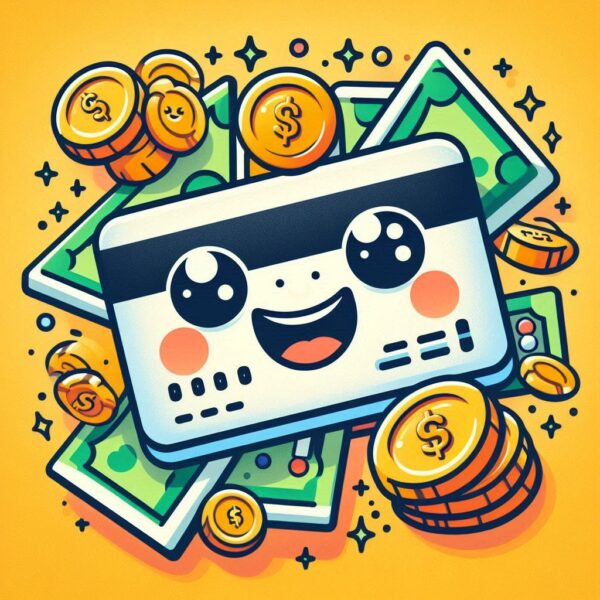Paying off a $10,000 credit card debt can feel daunting, so it’s key to first get a grip on all the factors that come into play. The speed at which you’ll knock out that debt often ties back to your interest rate. High interest can quickly add up, making it crucial to understand how it compounds and affects your overall balance.
Now, you might think just making the minimum payments will keep you afloat, but it’s a trap that extends your debt’s lifespan. Minimum payments barely scratch the surface—the real trick is tipping in more when you can to chip away at the principal faster. The bigger dent you make in that principal, the less interest you’ll rack up over time.
Worried about how your debt affects your credit score? It comes down to credit utilization, which is the percentage of your available credit that you’re using. Ideally, you want this number below 30%. When it’s higher, lenders might view you as a potential risk, which could impact your ability to take on new credit or loans.
Getting a handle on these basics will set you on the path to tackling your debt head-on and maintaining a healthier financial outlook.
Here’s a little transparency: Our website contains affiliate links. This means if you click and make a purchase, we may receive a small commission. Don’t worry, there’s no extra cost to you. It’s a simple way you can support our mission to bring you quality content.”
How Long Will It Take to Pay Off $10,000?
The question of how long it will take to pay off $10,000 in credit card debt is a common one. The answer really depends on a few critical aspects, like your interest rate and payment approach. Different scenarios can paint very different pictures in terms of timelines.
If you’re just doing the minimum payments, you could be looking at many years in debt due to the growing interest punching your pockets. But what if you got a bit more aggressive with your repayment strategy? Say you decide on making larger monthly payments or even switching to bi-weekly payments—this can cut your repayment time significantly.
Extra payments can be a game-changer. By periodically adding just a little more than the minimum whenever possible, you’re slicing away at the total debt, shortening the journey to freedom. It’s about finding room in your monthly budget for those extra bucks now to save loads more over time.
Online debt calculators can be lifesavers here. These tools let you plug in your outstanding balance, interest rates, and payment amounts to give you a clear picture of your payoff timeline. Having that estimate can help you devise a realistic plan tailored to your financial situation.
Negotiating Lower Interest Rates & Fees
Paying high interest rates on credit card debt can cost you hundreds—or even thousands—of extra dollars each year. Fortunately, a simple phone call or conversation with your credit card issuer can sometimes lead to reduced rates or waived fees. Here’s how to approach the negotiation process for the best results.
Why Should You Negotiate?
- Immediate Savings: A lower APR means you’ll pay less in interest each month, freeing up cash to put toward your principal balance.
- Improved Cash Flow: Reduced fees—such as annual charges—let you manage day-to-day finances more effectively.
- Long-Term Financial Health: Keeping more money in your pocket accelerates your journey toward debt freedom and can improve your credit score over time.
Step-by-Step Guide to Negotiating
- Gather Account Info: Before calling your issuer, take note of your current interest rate, payment history, and any recent positive changes to your credit score.
- Research Competitive Offers: Compare promotional APRs or balance transfer rates from other companies to strengthen your bargaining power.
- Make the Call: Politely explain you’re seeking a lower interest rate or a fee reduction. Emphasize your loyalty as a customer and your positive payment history.
- Negotiate Politely, But Firmly: If the first representative can’t help, politely escalate to a supervisor. Mention competitor offers if needed.
- Confirm in Writing: Once an agreement is reached, request written confirmation to avoid any confusion about your new terms.
What If Negotiations Fail?
Not every issuer is willing to lower rates immediately. If your initial attempt doesn’t work, you still have options:
- Try Again Later: Revisit negotiations when your credit score further improves or after several months of on-time payments.
- Consider a Balance Transfer: A card with a 0% introductory APR can significantly cut interest costs, though balance transfer fees may apply.
- Explore Debt Consolidation Loans: A personal loan with a lower interest rate can help you pay off high-interest credit card debt in one lump sum.
Negotiating lower interest rates and fees can put you back in control of your finances. With some preparation, a bit of research, and persistence, you’ll be on your way to reducing debt and saving money.
Back to TopStrategies to Pay Off $10K Debt Quickly
When tackling a $10,000 debt, choosing the right strategy can turbocharge your efforts. Two popular methods—the debt snowball and debt avalanche—offer different paths to quick debt relief. The snowball method focuses on paying off the smallest debts first, giving you quick wins and boosting motivation. The avalanche method, on the other hand, targets the debt with the highest interest rate first, potentially saving you more in interest payments over time.
Getting a handle on your budget is essential. Craft a realistic plan that leaves room for larger debt payments while accounting for everyday living expenses. Identifying areas where you can cut back, like dining out or subscription services, allows you to redirect funds toward your debt.
Need an income boost? Side gigs or freelance work can provide the extra cash needed to accelerate debt payments. Even minor gigs like dog walking, online surveys, or freelance writing can add up quickly when dedicated to paying off debt.
Another option is debt consolidation. By combining multiple debts under a single, lower interest rate loan, you could potentially save on interest and simplify monthly payments. This makes it easier to track your progress and might offer better terms than your current high-interest credit card payments.
Mindful Spending and Its Role in Paying Off Debt
Taking control of your spending habits plays a huge role in managing and paying off that $10,000 debt. It starts with spotting those non-essential expenses—a daily coffee, dining out frequently, or impulse online shopping can sneak up on your budget. By dialing down on these, you can free up extra funds to tackle your debt more aggressively.
Living a frugal lifestyle doesn’t have to mean sacrificing happiness or quality. It’s about making smart choices that work for you, like cooking more meals at home or opting for community events over costly outings. Every bit saved is an extra step toward financial freedom.
Being wise with credit card usage is another crucial aspect. Once you’ve started making headway on your debt, practice mindful credit habits by using credit cards only when necessary, ensuring you pay off any charges by the end of the month to avoid heading back into debt territory.
Always prioritize needs over wants in your financial decisions. This is not just a money-saving tactic; it’s a mindset shift that contributes to healthier finances and a more balanced approach to spending overall. Once you’ve embraced this habit, maintaining it can prevent the usual pitfalls that lead back to debt.
Month-by-Month Payment Plan Example
Tackling $10,000 in credit card debt can feel overwhelming, but creating a well-structured payment plan can make it more manageable. Below, you’ll find an example of a 12-month plan that shows how to systematically lower your balance while considering interest costs.
Note: This plan is a generalized example. Actual amounts may vary based on your credit card’s interest rate, your monthly budget, and any additional fees or charges.
Setting the Stage
- Interest Rate: 18% APR (annual percentage rate).
- Minimum Payment: 2% of the outstanding balance.
- Monthly Budget for Debt: $1,000 (varies by individual situation).
Before diving in, adjust these numbers to match your personal circumstances. If you can only contribute $800 per month, adapt accordingly. If you can contribute more, you’ll pay off the balance faster.
12-Month Payoff Example
| Month | Beginning Balance | Payment | Interest | New Balance |
|---|---|---|---|---|
| 1 | $10,000 | $1,000 | $150 | $9,150 |
| 2 | $9,150 | $1,000 | $137 | $8,287 |
| 3 | $8,287 | $1,000 | $124 | $7,411 |
| 4 | $7,411 | $1,000 | $111 | $6,522 |
| 5 | $6,522 | $1,000 | $98 | $5,620 |
| 6 | $5,620 | $1,000 | $84 | $4,704 |
| 7 | $4,704 | $1,000 | $70 | $3,774 |
| 8 | $3,774 | $1,000 | $57 | $2,831 |
| 9 | $2,831 | $1,000 | $42 | $1,873 |
| 10 | $1,873 | $1,000 | $28 | $901 |
| 11 | $901 | $901 | $14 | $14 |
| 12 | $14 | $14 | ~$0.21 | $0 |
Notice that as your principal decreases, the amount you pay in interest drops too. By consistently paying around $1,000 each month, you drive down the balance faster and minimize the total interest cost.
Pro Tip: If you can add extra payments or use windfalls (like tax refunds or bonuses) to pay more in certain months, you can shorten this timeline even further.
Key Takeaways
- Consistency Is Crucial: Sticking to your monthly target payment is the foundation of an accelerated payoff plan.
- Track Your Progress: Regularly check your balance to stay motivated and informed on how much interest you’re saving.
- Adapt as Needed: Life changes, and so do finances. If you lose income or gain extra funds, adjust your plan accordingly.
A month-by-month plan is a clear roadmap toward eliminating credit card debt. Tailor it to your own budget and financial obligations, and you’ll have a powerful tool for reaching debt freedom faster.
Back to TopMaintaining Financial Health After Debt is Paid Off
Once your $10,000 credit card debt is behind you, it’s crucial to keep the momentum going to maintain your newfound financial health. A great starting point is building an emergency fund to act as your financial cushion. This fund can prevent future debt by covering unexpected expenses like car repairs or medical bills, so you’re not reliant on credit.
Crafting a long-term financial plan helps keep your finances on track. It’s all about setting goals that align with your values, whether that’s saving for a home, investing in education, or planning for retirement. Regularly reviewing and adjusting this plan ensures it stays relevant to your changing life circumstances.
Understanding the significance of a good credit score post-debt is essential. A healthier credit score opens doors to better financial products and lower interest rates, which can save money in the long run. Be consistent with on-time payments and keep your credit utilization low to nurture that credit score.
And don’t forget to celebrate the milestone of clearing your debt—it’s a big deal and deserves recognition. Celebrating these victories helps maintain motivation as you work towards other financial goals.

